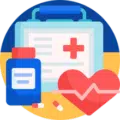Authors:
Brianna Patacini, PharmD, BCACP, CDCES
Dawn Fuke, PharmD, BCPS
Reviewers:
Courtney Davis, PharmD, BCACP
Jennifer Trujillo, PharmD, BCPS, CDCES, BC-ADM
Introduction: Continuous glucose monitors (CGM) are now commonplace, and every clinician should know the basics about who can benefit from CGM use and how to address common questions and problems. CGMs are classified as either for professional or personal use. Professional devices may not provide real-time glucose information to the patient but are downloaded for review and interpretation with the provider after a prespecified duration has lapsed (often between 7-14 days). Personal CGMs are owned by the patient and provide either real-time or intermittently-scanned glucose and pattern data. Real-time data is provided by the CGM every 1-5 minutes and intermittently scanned CGMs must be manually scanned to obtain current and historical data within a specified time frame that varies between devices. Patients using personal CGMs might use either a receiver device or a smartphone app that allows them to capture and review the data. One advantage of real-time CGMs is they can alert the user about current out-of-range glucose levels or trends.
Here are ten things every clinician should know about CGMs.






 iForumRx.org is a web-based community of practice designed to inform ambulatory care pharmacy specialists, pharmacy residents, and student pharmacists about high-quality, practice-changing evidence.
iForumRx.org is a web-based community of practice designed to inform ambulatory care pharmacy specialists, pharmacy residents, and student pharmacists about high-quality, practice-changing evidence.